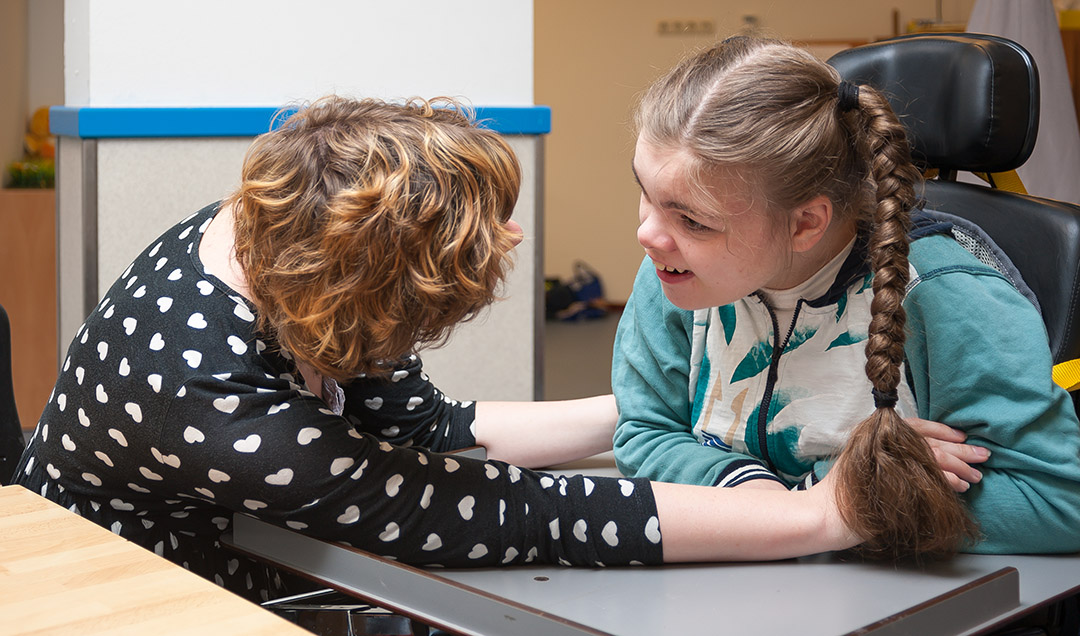In special education classrooms, paraprofessionals can play a crucial role in helping students with disabilities access their education. Paraprofessionals work in a variety of capacities, from one-on-one aides to classroom assistants, providing individualized support that fosters learning, development, and inclusion. However, while their contributions are invaluable, it is essential to understand both the strengths and potential drawbacks of over-relying on paraprofessionals. In this issue of Common Ground, we will explore the role of paraprofessionals in special education, the tasks they perform, the challenges that can arise, and strategies for ensuring that independence is developed in each student.
The Role of the Paraprofessional
In the context of special education, paraprofessionals are trained staff members who work alongside teachers to support students with disabilities. They are not licensed teachers, but they provide essential assistance that enables students to engage more effectively with the curriculum. Paraprofessionals can assist in both general and specialized education settings, working directly with students or helping to implement educational activities.
While paraprofessionals are a vital support resource, their role is distinct from that of a teacher. Teachers are responsible for designing and delivering the curriculum, assessing students’ academic progress, and making decisions about instructional strategies. Paraprofessionals support the teacher’s efforts by providing hands-on assistance to students. They help implement the teacher’s lesson plans but do not typically make decisions about instructional content or assessment.
In addition, teachers generally have the training and expertise to modify the curriculum or instructional methods to meet the diverse needs of students with disabilities. Paraprofessionals rely on the guidance and leadership of the teacher.
The role of a paraprofessional varies depending on the student’s needs and the specific classroom environment. They may work with students individually, in small groups, or as part of a larger team under the guidance of a special education teacher. Their support can be academic, behavioral, social, or emotional, depending on the needs of the students they assist. There are several types of paraprofessionals in special education, with each fulfilling different roles depending on the needs of the student and the classroom environment.
One-on-One Paraprofessionals (1:1 Aides) are the most common type of paraprofessionals in special education. This paraprofessional is assigned to work with a single student, often to those with more significant disabilities, such as autism spectrum disorder, intellectual disabilities, or physical impairments, who require individualized support to access the curriculum or to navigate social interactions. The primary duties of a 1:1 paraprofessional include:
- Academic Assistance – Helping the student with tasks such as reading, writing, math, or other subjects by providing direct support and individualized instruction.
- Behavioral Support – Managing behaviors by reinforcing positive behaviors, redirecting inappropriate behaviors, and following behavior management plans.
- Physical Assistance – Aiding students with mobility issues, personal care needs, or adaptive equipment, if necessary.
- Social Skills Support – Assisting students in developing social interactions with peers, including teaching appropriate social behaviors, and helping students navigate social situations.
Classroom Aides, unlike 1:1 paraprofessionals, provide support to multiple students in the classroom. They may assist the teacher with tasks such as:
- Supervising small groups of students – Paraprofessionals may work with groups of students to help them complete assignments or participate in group activities.
- Supporting classroom management – Aides can help with maintaining order in the classroom, assisting in transitions, and providing reminders for students to stay on task.
- Assisting with instructional materials – A paraprofessional might help prepare or modify materials for students with disabilities to ensure that content is accessible.
- Providing emotional support – Aides may offer comfort and reassurance to students who experience anxiety, frustration, or sensory overload.
Making the Decision: Does a Student Need a Paraprofessional?
The decision to assign a paraprofessional to a student is typically made by a team that includes the student’s parents, teachers, special education staff, and other professionals. This decision is made based on the student’s Individualized Education Plan (IEP), which outlines the student’s specific needs and goals. The IEP should describe the role of the paraprofessional, the times of day that the paraprofessional is needed (and when they are not), and the plan to fade out the paraprofessional. The IEP should include goals specifically designed to reduce the level of support over time, as the student develops greater independence, and ways to measure that increased independence. In all cases, the paraprofessional should be well trained for the role.
A team might recommend a paraprofessional for a student who requires:
- Significant behavioral support to help manage challenging behaviors.
- Personalized academic assistance to support learning when the student struggles to access the curriculum.
- Social or emotional support to help the student build relationships or manage anxiety in school.


 .
.